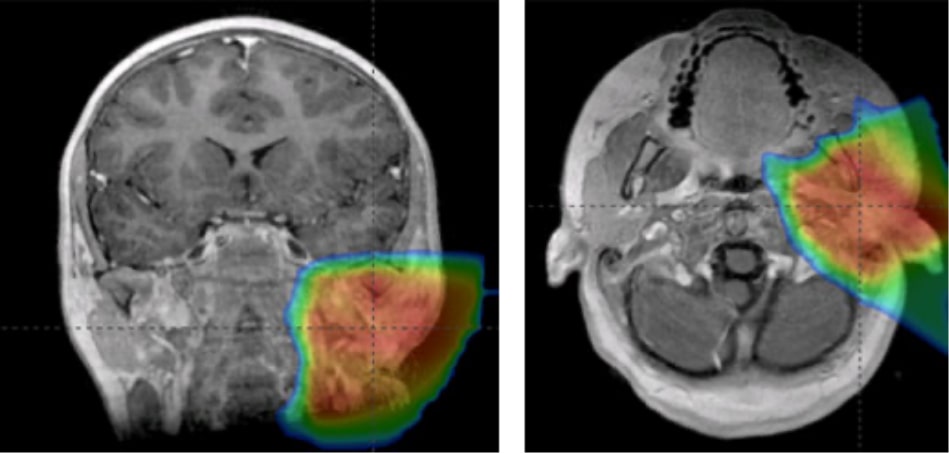Although uncommon, children and young adults can develop carcinomas of the head and neck region. These most often include parotid carcinoma and nasopharyngeal carcinoma, which require high doses of radiation to the front of the brain, nerves of the skull base, salivary glands, mouth, and facial bones. Children with carcinomas of the head and neck region are at risk for radiation side effects that include neurocognitive impairment, hormone deficiency, vascular disease, dental decay, facial deformity, blindness, and hearing loss. In these cases, proton therapy (or proton therapy combined with conventional radiation), minimizes the risk of unnecessary radiation exposure beyond the tumor. Published data reports relatively few acute side effects in children who receive proton therapy, a considerable improvement upon patients who receive conventional therapy or IMRT. In 2019, the pediatric team at the University of Florida published their results using proton therapy for children with nasopharyngeal carcinoma, the largest experience worldwide.1

1Uezono H, Indelicato DJ, Rotondo RL, Sandler ES, Katzenstein HM, Dagan R, Mendenhall WM, Mailhot Vega R, Brennan BM, Bradley JA. Proton therapy following induction chemotherapy for pediatric and adolescent nasopharyngeal carcinoma. Pediatric Blood Cancer. 2019 Dec;66(12):e27990. doi: 10.1002/pbc.27990. Epub 2019 Sep 16. PMID: 31524334.
